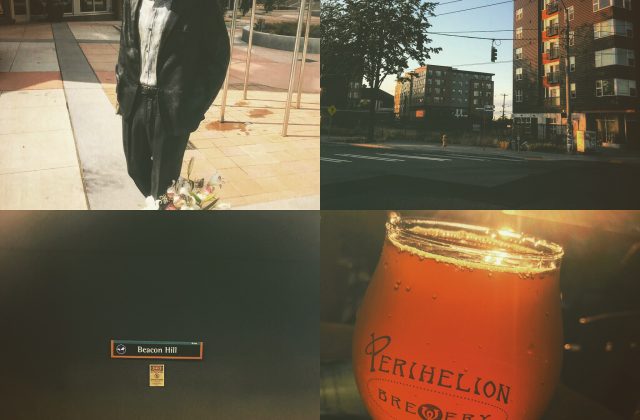The Way Back Machine: Neighborhood Planning and the Beacon Hill Station
This is part of a longer series looking back at 20 years of land use, planning, and housing policy history leading up to the state we’re in today. Last time it was the South Park Bridge. Now, here’s the story of a neighborhood win that took many years to achieve.
Way Too Deep: The Beacon Hill Station
Back in the 1990s light rail, to me anyway, seemed like a far off piece of science fiction. But the neighborhood planning process wrapped in planning for the station since it would be located right in the middle of the urban village. Sound Transit, at that time I think called the Regional Transit Authority (RTA) was busily putting together a plan for the length of the whole line which would start downtown and end near the airport going through the Rainier Valley along the way.
Light rail in the region has been typified by a usual pattern: battles for funding at the state and regional level and then at the ballot, getting the funding based on a general plan and alignment, then bitter battles all along the line over every conceivable detail of how the station would fit into the local circumstance and situation.
Beacon Hill was no different, except there was no station planned (some of the following material is reworked from a post I wrote for Sightline in 2009).
The measure that created what we now call light rail and Sound Transit passed in 1996 and that didn’t mean that light rail as we now know it was a certainty. There were 8 more years of wrangling about the alignment, mitigation, and whether the line would be at grade or in a tunnel—among thousands of other details.
One set of advocates pushed for the tunnel to run through the Rainier Valley to bring jobs and economic development to the area. Then, once the choice had been made to put it there, another group called Save Our Valley arose, demanding that the line be put underground or canceled. They feared that the construction would ravage neighborhoods and the rails would slice communities in half. They sued Sound Transit—the agency that was created by the voters to make light rail happen—and put up signs throughout the proposed route that said “Tunnel or Nothing!”
In February of 1995, I moved to an apartment on Beacon Hill and got involved in neighborhood planning. A group of dedicated people pushed hard for a station on Beacon Hill even though Sound Transit, at the time, said a station there would be too deep and too expensive. The group persisted and finally got a station worked into the plan. Shortly after that group collapsed from exhaustion, a new group arose on Beacon Hill opposing the station claiming that it would destroy the character of the neighborhood.
The battle over whether or not there would be station or not is worth looking at a bit more closely. There was this guy named Warren Yee who lived in the neighborhood and made it his cause to get a station. He was indefatigable on the subject, and worked to get the station in the neighborhood plan in spite of being told over and over again, “It’s too deep!”
In fact, at the time there was no station in all of North America as deep as the one that would be needed to connect the train, which would pass beneath Beacon Hill, to the neighborhood above. The closest thing was the station at the Portland Zoo, which I visited sometime during the discussions to get a sense of what we were dealing with.
Again and again light rail officials and planners would effectively pat us all on the head and explain the huge problems and expense associated with a station on Beacon Hill.
It’s not going to happen.
But what if it did?
It’s too expensive.
What if funding was found?
There isn’t any. Do you read the papers?
Let’s plan anyway.
[Eye roll] OK. Fine. Plan your little hearts out.
So the neighborhood planned and thought about what a station there would be like. The City created a whole group and staffing for Transit Oriented Development (TOD) around the station.
I’m hazy on the exact timing of how the neighborhood planning work and the work around TOD came together, but Beacon Hill was in the TOD planning mix as well as neighborhood planning. Zoning was discussed and we looked at ways to created lots of density on the blocks surrounding the station. The new library for a brief time was also possibly going to be positioned near the station that would have been across from the Red Apple grocery store.
Again, there was conflict. Some pushed against the density. Some didn’t like where the station’s vents were going to be. And we hassled and fought bitterly over where the library was going to be.
Then we found out that there was enough funding to build a “station shell” for Beacon Hill. That meant that there wouldn’t be an actual station, just the ability to build one later if additional funding became available. Then the word came, yes, Beacon Hill would get a station.
Like South Park, it was all about persistence. Yes, a new station would bring a bunch of new problems to the neighborhood (“What about Perry Ko’s?”) and there would be a whole new set of unknowns created by the arrival of a station. But the neighborhood got what it has asked for simply by asking again and again and planning as if the dream would come true.


